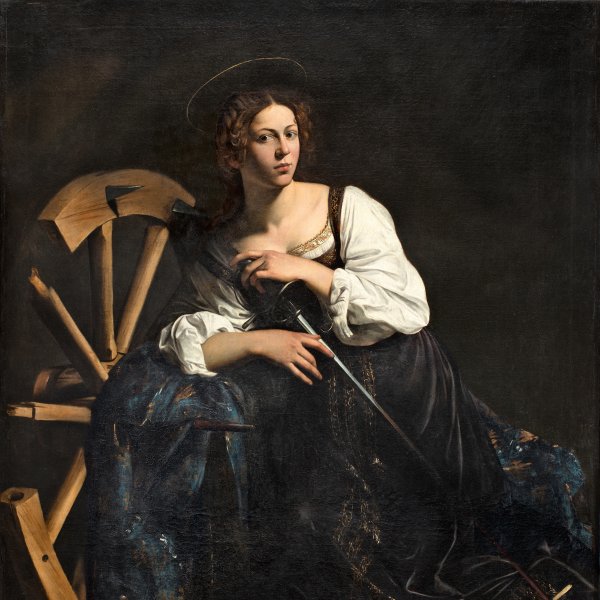Caravaggio (Michelangelo Merisi)
Michelangelo Merisi, known as Caravaggio, was the son of Fermo Merisi, who was in the service of Francesco Sforza Colonna. He trained with Simone Peterzano in Milan, where he is documented in 1584. In 1592, he proceeded to sell his possessions in order to move to Rome, where he enjoyed the support of Costanza Colonna’s family. There he frequented the studios of Lorenzo Carli, the Cavaliere d’Arpino and Antiveduto Gramatica. The turning point in Caravaggio’s life and work came when he met his first patron, Cardinal Francesco Maria Del Monte, in whose residence – the Palazzo Madama – he lived from 1597 to 1601. He painted a number of works for Del Monte, including the Head of Medusa in the Galleria degli Uffizi, and the Fortune Teller in the Pinacoteca Capitolina. Caravaggio’s first important commission was for the canvases on the life of Saint Matthew for the Contarelli chapel in San Luigi dei Francesci (1599‒1600), followed by those for Santa Maria del Popolo (1600‒1601). The pronounced realism of these series and the artist’s use of intense chiaroscuro made a profound impression on the Roman art world due to their highly innovative nature and brought him fame and popularity. During those years he produced the Burial of Christ in the Pinacoteca Vaticana, the Madonna of Loreto in the church of Sant’ Agostino, the Madonna dei Palafrenieri in the Galleria Borghese, and the Death of the Virgin in the Musée du Louvre.
Caravaggio worked for some of the most important patrons of the day, including Marquis Vincenzo Giustiniani, Cardinal Scipione Borghese and the banker Ottavio Costa. His new manner of bringing the sacred closer to reality was one of the reasons for his popularity but he also triggered controversy by using beggars and prostitutes as models for his paintings. Caravaggio was an ambitious man with a fiery temperament who frequented taverns and his excesses caused his serious problems with justice as he was often involved in brawls. In 1606 he killed his rival, the painter Ranuccio Tomassoni, in a duel. This forced him to flee immediately to the south of the country, abandoning Rome for Naples, where his work made a particularly strong impact. From this moment onwards, Merisi was constantly fleeing. In 1607, he is documented as being in Malta, under the protection of Alof de Wignacourt, Grand Master of the Order of the Knights of Malta, where he painted the Beheading of Saint John the Baptist, his only signed work. He then moved to Sicily, where he lived from 1608 and 1609 and painted the Resurrection of Lazarus in Messina and the Burial of Saint Lucy in Syracuse. In late 1609 he returned to Naples, where he set sail for Rome and died at Porto Ercole on 18 July 1610 during the journey. Caravaggio, who had no pupils as such, had numerous followers who disseminated his style throughout Italy and the rest of Europe. Echoes of his art can be detected in the work of Rembrandt and Velázquez.





